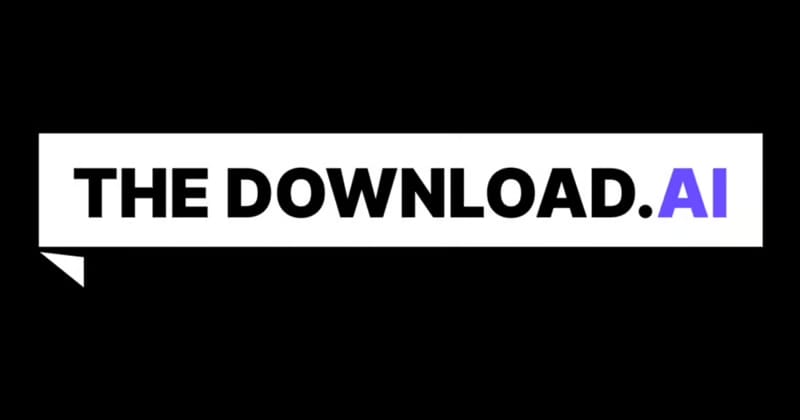- TheDownload.AI
- Posts
- 79th Edition Download
79th Edition Download
Sam Altman’s atypical compensation vs. OpenAI’s staggering valuation, Microsoft’s warning on seemingly conscious AI, and Google’s quietly smart new devices.

LinkedIn Strategy To Be Recruited
Hey everyone, Aidan here.
I want to talk today about something that can quietly make or break your job search:
Your LinkedIn profile.
For most of us, it’s the first impression we leave on recruiters and hiring managers, and whether we like it or not, it works like a storefront window. If it’s messy, outdated, or vague, people keep walking. If it’s sharp, clear, and confident, they stop and take a closer look.
The first thing to understand is that LinkedIn is your personal landing page. A good headshot, a banner that actually says something about you, and a headline that does more than state your job title are the basics.
Think of your headline as the tagline of a business. “Looking for opportunities” tells someone nothing. “I help startups grow through AI-powered content” tells them exactly who you are and why they should pay attention.
Then there’s the About section, which is one of the most underused pieces of real estate on the platform. Don’t treat it like a dry list of accomplishments.
Write it in the first person, tell your story, and be honest about what drives you. If you’ve got a project you’re proud of, even if it was in school, in a volunteer role, or a side hustle, make that part of your narrative.
Recruiters read dozens of cookie-cutter profiles a day. A little bit of humanity and specificity can make you unforgettable.
And when it comes to experience, avoid the trap of just listing duties. Employers want to know what you actually did. Replace “managed a team” with “led a team of five through a project that boosted engagement by 30%.” The numbers don’t have to be huge; they just need to prove that you create impact.
Finally, remember that LinkedIn is a living platform. Profiles that sit untouched collect dust. If you’re sharing insights, commenting thoughtfully, and staying active, you don’t just show up in search results, you stay top-of-mind. And when the right recruiter stumbles across your profile, they’re seeing not just a job title, but someone who’s engaged, informed, and already adding value.
Optimizing LinkedIn isn’t about tricking the system; it’s about giving people a clear, compelling picture of who you are and what you can do. If you do that, you’ll stop being invisible and start being irresistible.
— Aidan
This Week in AI:
No jargon, no filler—just the biggest AI developments worth knowing right now. Perfect for quick industry insights, so you can skip the buzzwords and get straight to the good stuff. Let’s dive into this week’s AI shake-ups, just as promised:
On one end, OpenAI is preparing for a potential $500 billion valuation, even while CEO Sam Altman famously takes no equity and a token salary. At the same time, Microsoft’s Mustafa Suleyman is sounding alarms about “seemingly conscious AI,” warning that the illusion of sentience may be one of the most destabilizing challenges ahead. And over at Google, the company is threading AI deeper into its device ecosystem, creating features that don’t just respond to you but anticipate your next move. Three stories, three signals that the future of AI is as much about perception and experience as it is about raw power.
Let’s get into it.
In This Issue:
Sam Altman’s $0 Pay, $500B Company → Why the man who barely draws a paycheck might helm the world’s most valuable startup. (link)
Seemingly Conscious AI? It’s Closer Than You Think → Microsoft warns that AI may feel alive, and that illusion could trip us up. (link)
Google’s Next-Level AI Devices → Next-gen gadgets aren’t just smart, they’re about to think ahead for you. (link)
TL;DR:
Sam Altman officially makes just $76,001 a year and owns zero equity in OpenAI, yet the company is in talks to sell $6 billion in shares, potentially pushing its valuation to $500 billion. That would make OpenAI the most valuable private company on the planet.
Our Take:
Altman’s token salary and lack of equity underscore how his wealth stems from savvy early investments, not salary. But the nearly half-trillion-dollar valuation? That’s where the real magnetism lies. The full deal details will likely draw even more internal exec scrutiny. Worth keeping on your radar.
TL;DR:
Mustafa Suleyman, CEO of Microsoft AI, says AI systems that seem conscious, though not actually sentient, may be here sooner than we think. He warns that such perceived consciousness can be dangerously misleading and urges developers to make models feel helpful, not human.
Our Take:
SCAI (Seemingly Conscious AI), this isn’t sci-fi. The illusion alone can break our mental safety. Suleyman’s right: we must build AI that’s clearly not a person, even as it becomes more fluent, empathetic, and autonomous. If you're designing AI experiences, imprint that distinction straight into the UI. And if you want to dig deeper, there’s a robust debate in academia on whether true AI consciousness is even possible.
TL;DR:
Google is gearing up for an AI device blitz. From phone features like “Magic Cue” and “Camera Coach” to AI trending across gadgets, it's ramping up how it anticipates your needs: think instant flight info, automatic photo framing, and even AI plans before you know you need them.
Our Take:
This isn’t Google chasing flashy headlines; it’s making its AI feel invisible and indispensable. These features are all about proactive smarts, not reactive assistants. If you care about product UX, study how anticipation becomes utility. Devices might soon feel predictive because they are.
🚀 Thank you for reading The Download
Your trusted source for the latest AI developments to keep you in the loop, but never overwhelmed. 🙂
*For sponsorship opportunities, email [email protected]



Reply